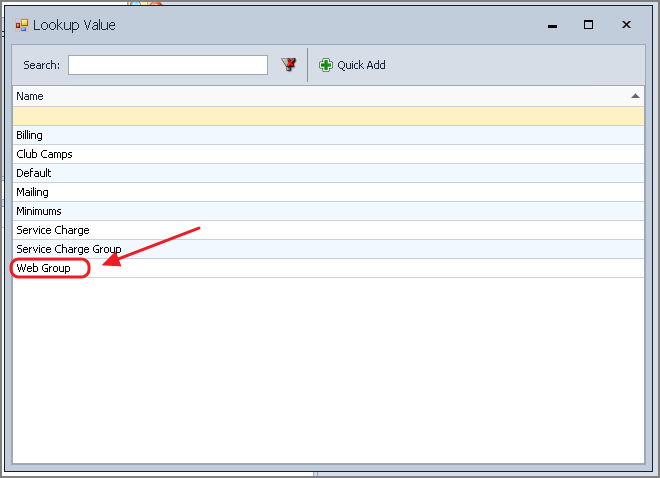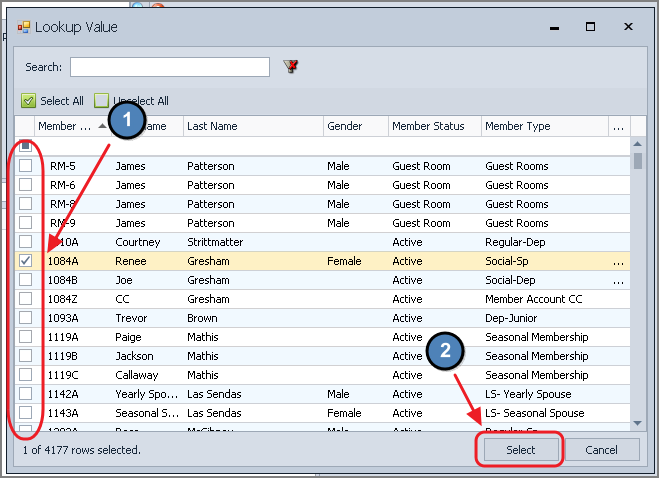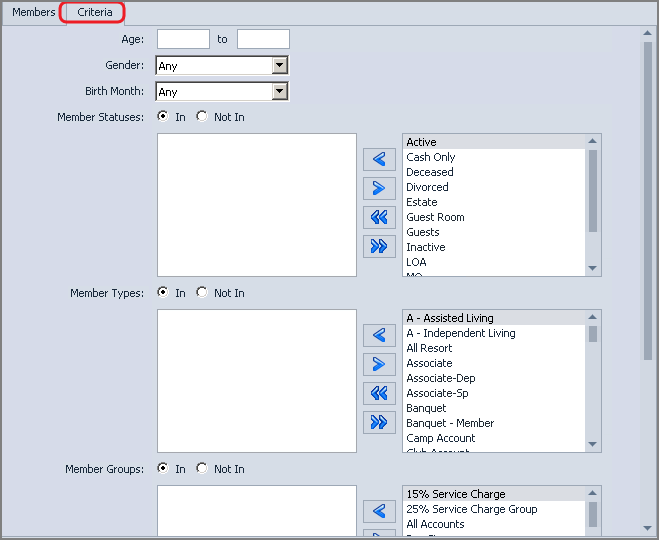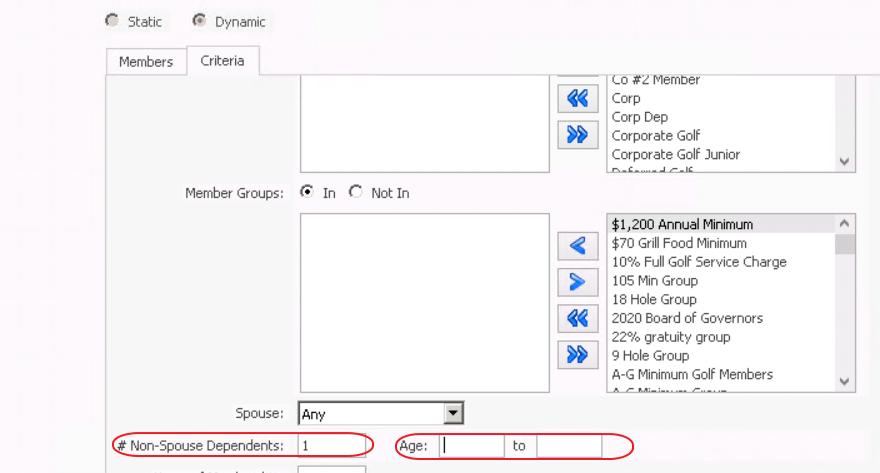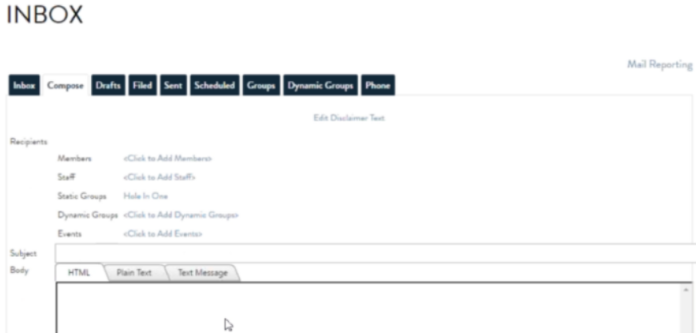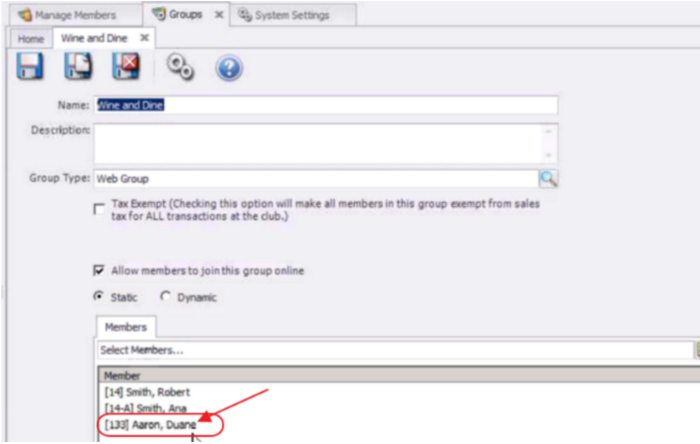| Table of Contents | ||||||||
|---|---|---|---|---|---|---|---|---|
|
Overview
The Unified Platform allows Clubs to manage their Member Groups seamlessly across the (back) Office and Axis-Website, ensuring Club Administration has the tools they need for managing and communicating to Groups, and Members can easily join Groups that are relevant to them.
Use Case(s) A Club may wish to establish several different types of Membership Groups to accomplish various marketing and communication goals. For instance, a Club may wish to put all Members who are on the Board in a specific fixed, or Static group, so they can email minutes, calendar updates, etc. The club may also desire to establish Dynamic Groups, or Groups that fluctuate Membership based on certain parameters given to it (for instance all Members who have Birthdays for the current month). Additionally, the Club may also want the ability to set up Special Interest or Other Groups, like a Wine Club, whereby Members may sign up (or opt-in) to the Group(s) that are of interest to them via the Club’s Website. The Unified Suite provides the Club with the ability to meet their goals. |
Video
This video contains highlights from a training Webinar given on the Groups Unification process.
...
| Widget Connector | ||||||
|---|---|---|---|---|---|---|
|
Content
|
|---|
Office
Groups and Group Creation
All Groups that will be shared between the Office and the Axis-Website need to be created in Office to effectively sync with the Website.
...
Static - Regular - This group type contains a fixed group of Members, and is assigned by the Administrator. Members do not have the option to add themselves or opt-in to this group.
Static - Opt-In - This group type contains a fixed group of Members. Additionally, Members may join or opt-in to this group. Administrators may also assign Members to this Group.
Dynamic - This group type contains a variable set of Members, based on the parameters associated with the group. Administrators set the parameters, and the system automatically assigns membership based on the parameters. Depending on the parameters set, the Membership of a Dynamic Group may change as criterion is met or not met.
Create a Group
To create a new Group, first navigate to the following:
Click on “Membership”
Select, “Groups”From the top navigation bar, navigate to Membership.
From the sub-navigation options, select Groups.
Then, click “New” Click the New icon.
For all Groups, provide a Name, an additional Description (if desired), and choose the Group Type relevant to the New Group. Note the lookup feature may be utilized to assist with Group Type.
Once Group Type Lookup Value screen launches, select appropriate Group Type. Note - the Group Type is an internal reference, and does not automatically sync to the Web, simply because it may be titled, “Web Group”.
The following settings define the Type of Group.
Static Group (General) Options
...
To establish a Static Group (General), select the “Static” option, and then add Members to Select the Static option. Add Members to the Group by clicking on clicking the Lookup icon to access the Member selection boxSelection screen.
Check Members to include in Group, and then, click, “Select.”
Place a check mark next to the Member's Name, then click Select.
Static Opt-In Group Options
To set up a Static (Opt-In Group), select the “Allow members to join this group online” option option, and select the “Static” option option. Optionally, add Members if desired. Once synced, Members will be able to join, or “Opt-in” to the group via the Website.
Dynamic Group Options
To set up a Dynamic Group, select the “Dynamic” option option. Confirm Dynamic Group setup by clicking, “Yes.”
Then, specify parameters/criteria of the Group. Age Age, Gender, Birth Month, Member Status, Member Type, Member Groups, Spouse, #Non-Spouse Dependents and their respective age ranges, years of Membership, and Report Criteria may all be used to define how Membership within the Group will be generated.
When working specifically with the #Non-Spouse Dependents filter, this is referring to the children associated with the Primary Member. The result of using this filter will only include the name of the Primary member who has children and does not include the name of the Spouse in this group. When using this filter, we recommend the following settings be used for best results.
Utilize the Member Status filter to include any "Active" Status. It is not necessary to filter specifically by Member Type, unless your results must be restricted to those of a particular Member Type. Ie...Golf Member Types.
It is VERY important to enter a '1' or higher in the #Non-Spouse Dependents when using this as a filter.
Interpret this field as telling the system to include any member who has "1 or MORE" children. If entering a higher number in this field, such as '3'; it will tell the system to look for any member that has '3 or More" children. Enter the number of child/dependents to be included in the search results. To use this filter, enter "1" or higher.
IE. When entering "2" as seen below, the system will include any primary member that has "2 or more" children. If the number entered is "5", the system will look for any primary members with "5 or more" children.
It is not required to enter actual age ranges. This filter is useful if the Dependent's Office record includes a Date of Birth. When placing a value in the Age Range Fields, if a member has a child who does not have a Date of Birth listed in their office record, they will NOT be included in this group. . The Age filter should only be applied if the club tracks a Date of Birth for every Dependent record.
Utilize the Member Status filter to include any Active Status. It is not necessary to filter specifically by Member Type, unless your results must be restricted to those of a particular Member Type. Ie...Golf Member Types.
Note: To utilize the “Report Criteria,” click, on the “Valid Reports” option to view which reports can be utilized to define Membership.
...
For all Groups, once setup is complete, click Save and Close.
Sync Groups to Website
Once Groups have been established in Office, they will need to be set to Sync to the Website.
...
All other Group data will be pushed from Office to the Website.
Axis-Website
View Groups in Website
As an Administrator (View Groups and Send Emails)
Once logged in to the Website as an Administrator, click the Admin Toolbar, and choose the Groups option.
...
Notice the Group Name and Group Members are returned. Click “Send Group Email” to launch the Email Composing screen.
Compose Email.
As a Member (Opt-In to a Group)
When a Member enters the site, navigate to “My Profile” to view available Opt-In Groups.
...
Once synced, Member appears in Group in Office.
Best Practices
Create and Administer all Shared Groups in Office to ensure proper syncing with the Axis-Website.
FAQs
Q. Why aren’t the changes I made to a Group on the Website showing up in Office?
A. Other than Membership Adds of Static Opt-In Groups, all Groups must be created and administered from Office to ensure all changes sync appropriately with the Axis-Website.
Downloadable Guide
Unification - Groups - Written Guide
...





